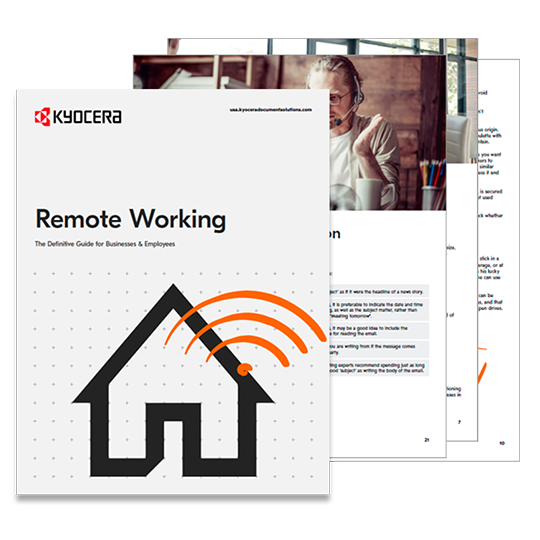In 2020, organisations across the globe were forced to improvise. A global pandemic forced organisations to send workforces into remote working situations on a scale the likes of which had never been seen before.
The legacy of that will be that workers will be more open to the idea of working from home than they were before. What was previously seen as unrealistic by many companies has suddenly become the norm for weeks, or even months, on end. From the point of view of employees, there is no reason why companies should not offer remote working as a regular option as ways of working become more flexible.
What’s more, remote working is the future. A 2015 survey by FlexJobs found that 85% of millennials want positions that would allow them to telecommute all of the time. As this generation reaches more senior positions and as companies do more to attract the very best talent, having a clear policy on how this can be achieved is essential. For companies to define that, they must establish what is expected of all sides.
What’s expected of the worker?
The definition of processes is the first step to any working from home policy. If a worker is to work from home, it’s essential that it’s clear how often they can do so, who they should inform and how it should be communicated. A good way to do so is to coordinate via online calendars to ensure that any remote working requests can be accepted by the relevant manager or HR colleague, and it is then visible for all.
Equally, other elements may need clarifying. For example, working hours. Given the flexibility provided by home working, the ideal working hours will differ greatly between a parent with young children and a recent graduate who loves playing video games late into the night. Establishing a range of working hours or guidelines can help to ensure that everyone is connected when they need to be, whilst they also have the flexibility of remote working.
It is also crucial that Key Performance Indicators (KPIs) are set up. This way it is easy for management to see whether productivity improves, falls or is consistent regardless of where a professional is working. This is important for the remote worker to have a target to work towards and they can always be motivated and connected to the goals of the team, even if they may not be together in person working towards them. This element further enables management to assess how well remote working applies to their business and whether to roll it out further if suitable.
What do employees get in return?
Telecommuting is not simply a one-way street. It brings benefits to the company to have workers based at home. Not only can they be more productive, but remote working is also more cost efficient. Businesses will be able to operate with smaller offices with lower operational costs. Equally, the employee will assume greater costs. They may have to upgrade their internet connection or make calls from their personal cell phone. They could even see increased household bills as they spend more time at home, and these are important factors to consider when looking at incentives and salaries for workers based at home.
It’s vital that workers are given the right tools to work remotely. This could range from a laptop or mobile device, rather than a desktop computer, to additional antivirus technology for their devices to minimise cybersecurity risks. Ensuring that they are fully equipped is the minimum requirement for any business offering remote working.
Beyond material benefits, it is also important to ensure that employees work is humanised as much as possible. Contact via webcams or video conferences helps to add a human touch which reduces the feeling of loneliness which can often be felt by those working from home. Regular contact in this way should be outlined in any policy to guarantee that managers and colleagues alike fulfil this requirement.
How to communicate a work from home policy?
Communicating this kind of policy with the utmost clarity is essential. The key to taking advantage of remote working, as can be seen in these steps, is to make sure that communication is as fluid as if the teleworker is sat in the same room. The first obstacle to making that possible lies in establishing a policy which makes remote working simple.
It also helps to make clear what is expected of them and when. For example, it should be outlined where a remote working location can be. Many who telecommute like to mix up their locations, perhaps operating from a park in the summer or a café. Doing so can mean relying on public internet networks which pose security risks, so if your
organisation decides to determine strict locations for telecommuting, they must be communicated.

Remote Working: Download Kyocera's Definitive Guide for Businesses & Employees
Discover what organizations must address and the best practices for remote workers to achieve a competitive advantage.
Discover more about Remote Working
Protect your cybersecurity, establish an ideal work-life balance and create a consistent work from home policy.





